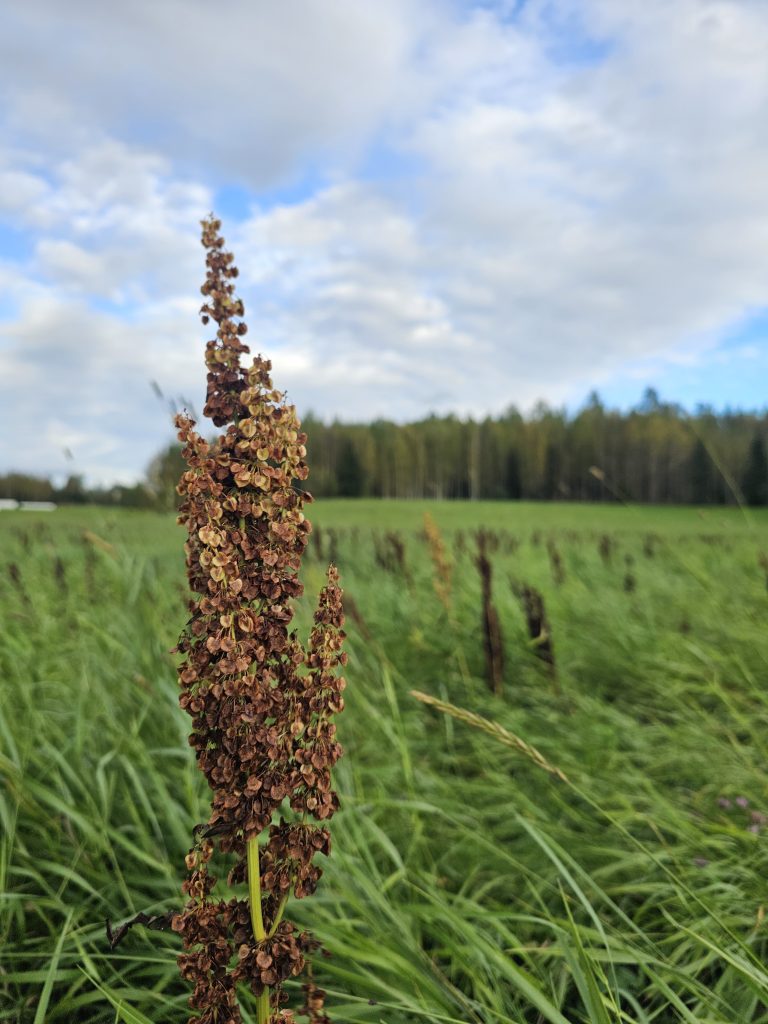
Today we”ll talk about an easy forageble plant called “Rumex crispus” AKA Curly Dock! Belonging to the family of Polygonaceae.
Recently I started to use wild seeds in my kitchen thanks to a course by Lena Deckert and i really wanted to try out R. crispus.
I went with Vasiili for a ride and we collect a big harvest 🙂
(P.S. Always go to harvest your wild seeds after 3 days of sun, without rain.)
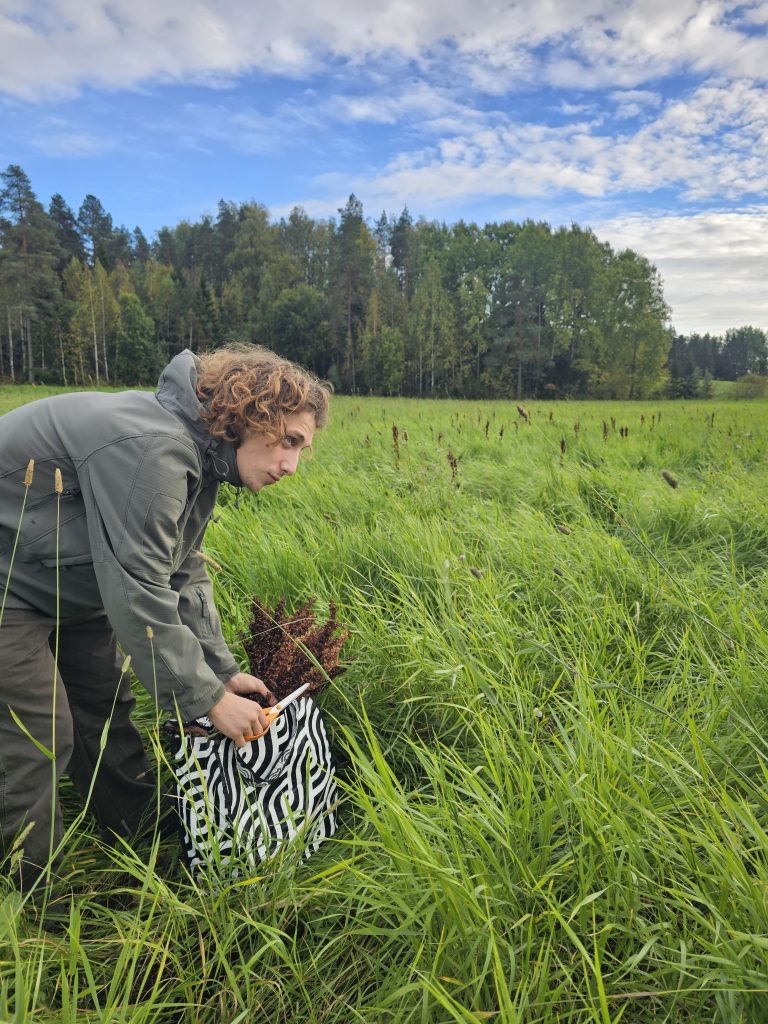
R. crispus loves wide meadow, prefering moist, rich, loamy soil. Even though it can tolerate well drained soils like sand and clay. It can be found in all of europe, northern africa, russia and china.
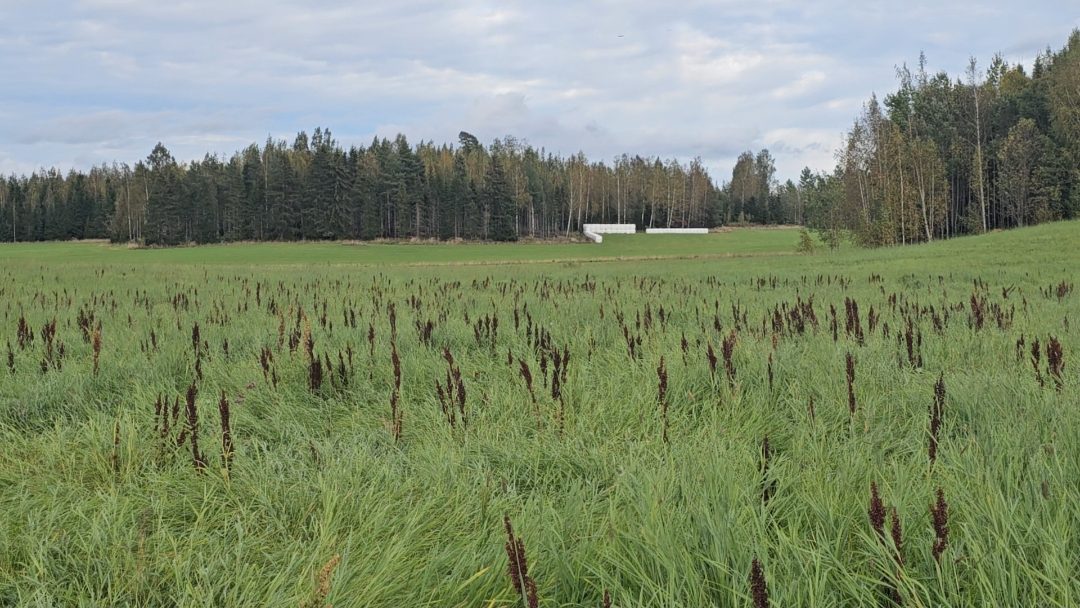
After coming back home, the first step to take is to let the plant rest to allow all of the little animals, insects and arachnids to leave the place and find a new home 🙂
After it, we want to dry our seeds through two different options:
- Hang the whole plant upside down and remove the stems and seeds later
2. Collect the seeds from the plant, place them on a oven tray, remove possible leaves and little stems from the seeds, place the tray in the oven at 30°C for 1 hour and a half
I chose number two.
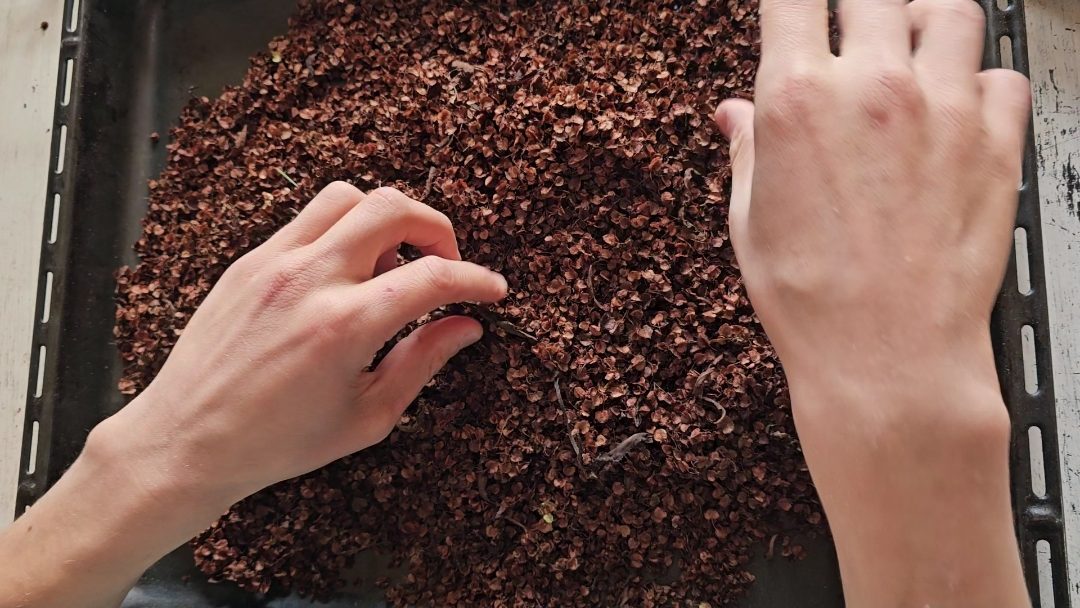
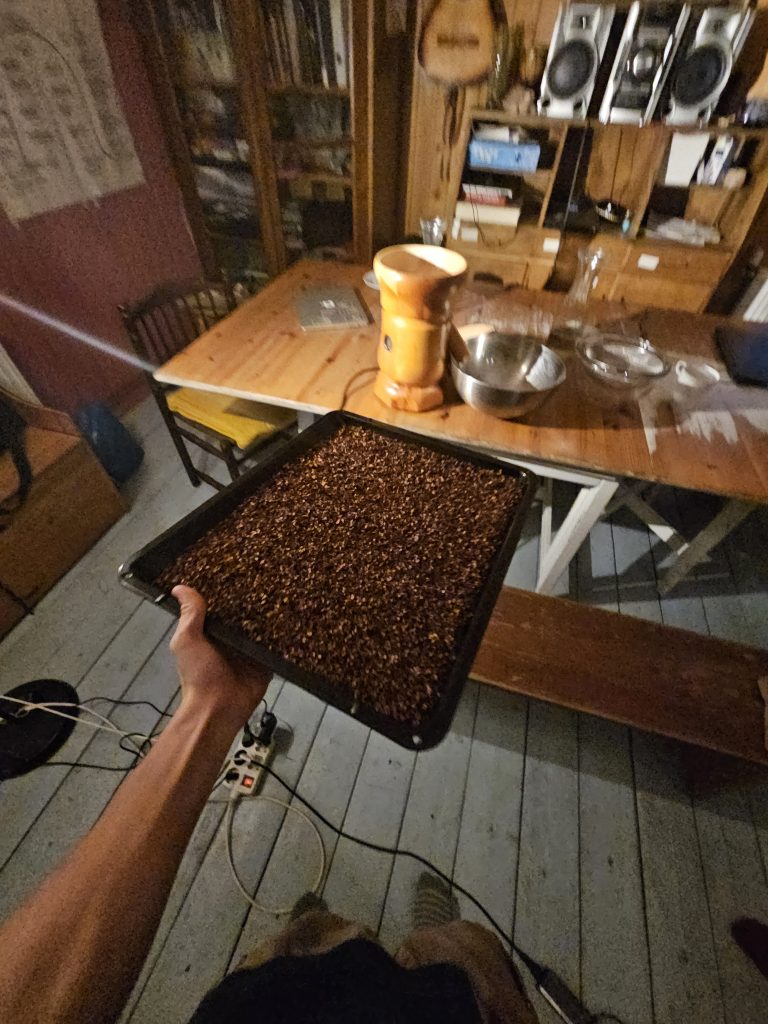
After toasting we are ready to grind our seeds.
In my case I found an electric stone mill at home but also a classic blender or, even better, a coffee grinder will work well.
What we want to do now is to grind the seeds and then sieve the powder to catch all of the leftover pieces of dry fruit of R. crispus seed.
Repete this process of sieving for 4-5 times.
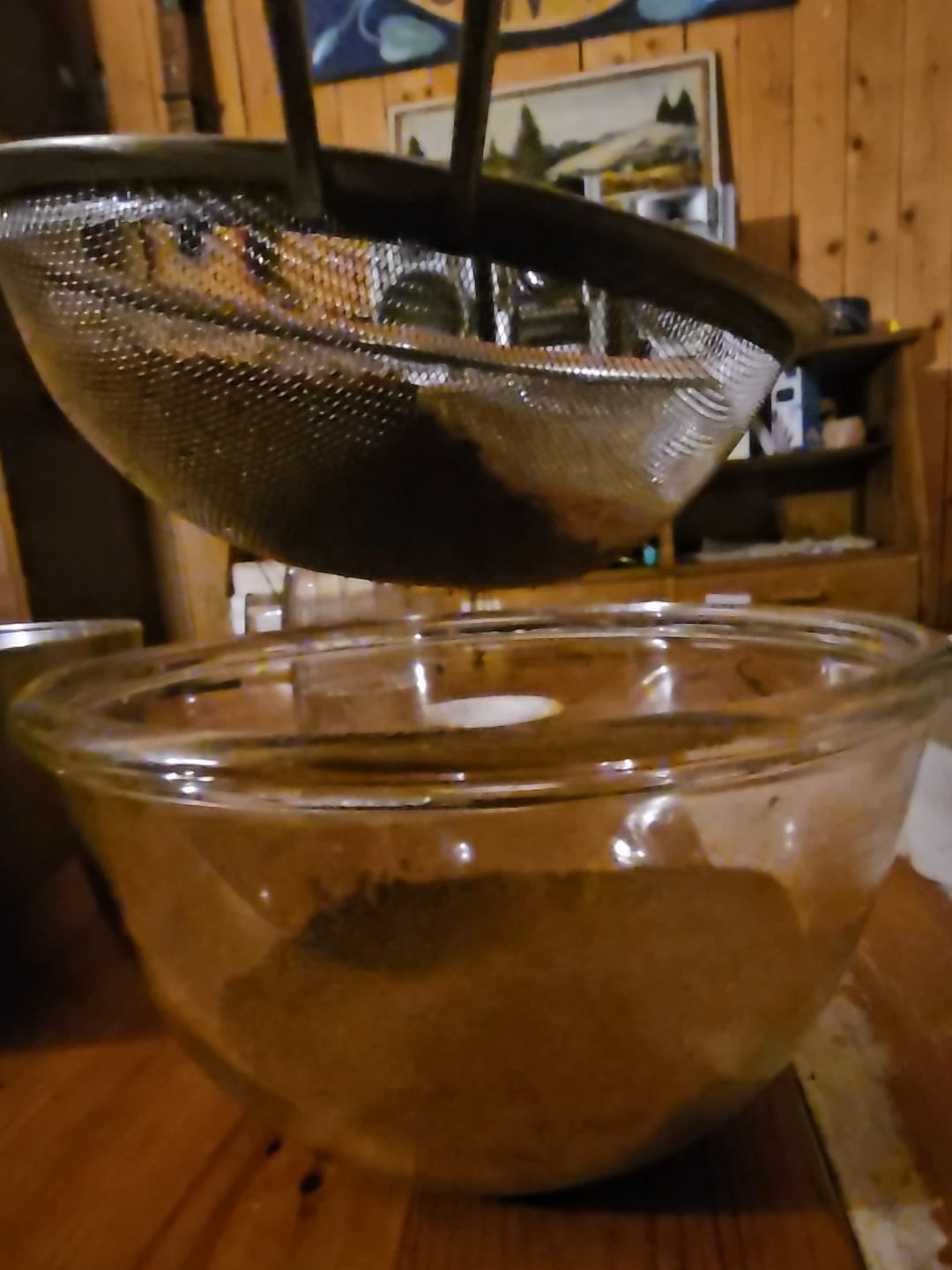
Once your flour has been well cleaned from all of the big dryed pieces of fruit, you can store it in a well dryed sterilized jar with a hermetic lid in a dark space.
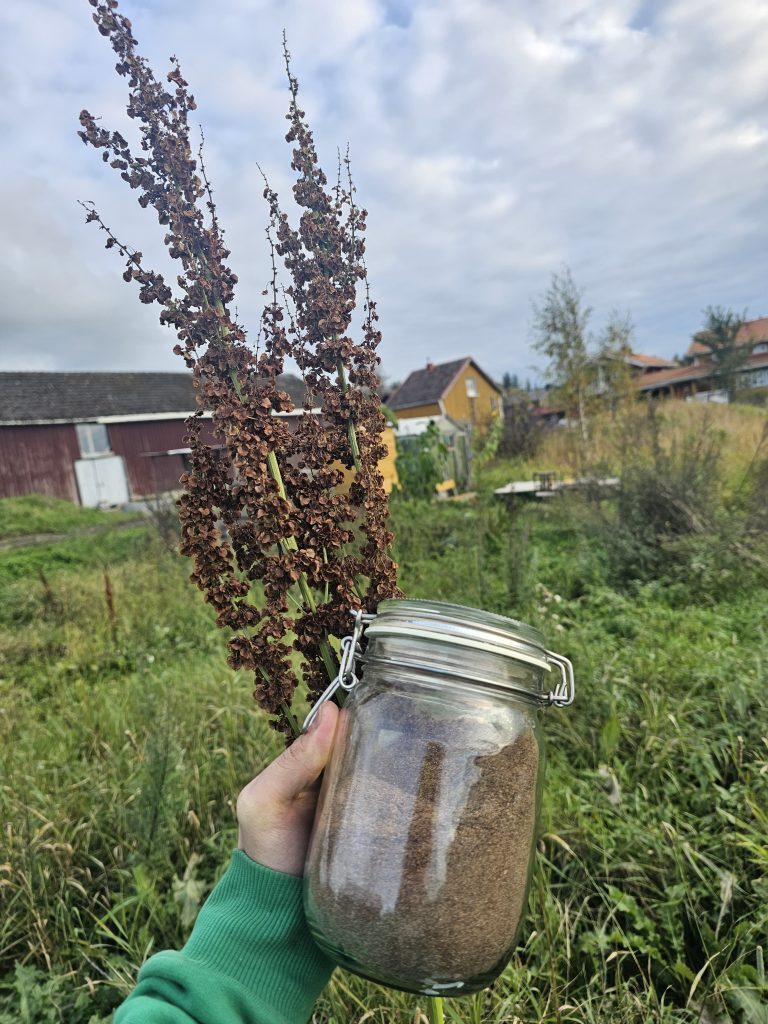
“How can we use it?”
The flour of Rumex has been used as a astringent, laxative, diuretic and blood purifier since ever.
It can be used in addiction to soups, vegetable creams or inside pasta, crackers and bread dough adding the 25% of the weigh in Rumex powder.
